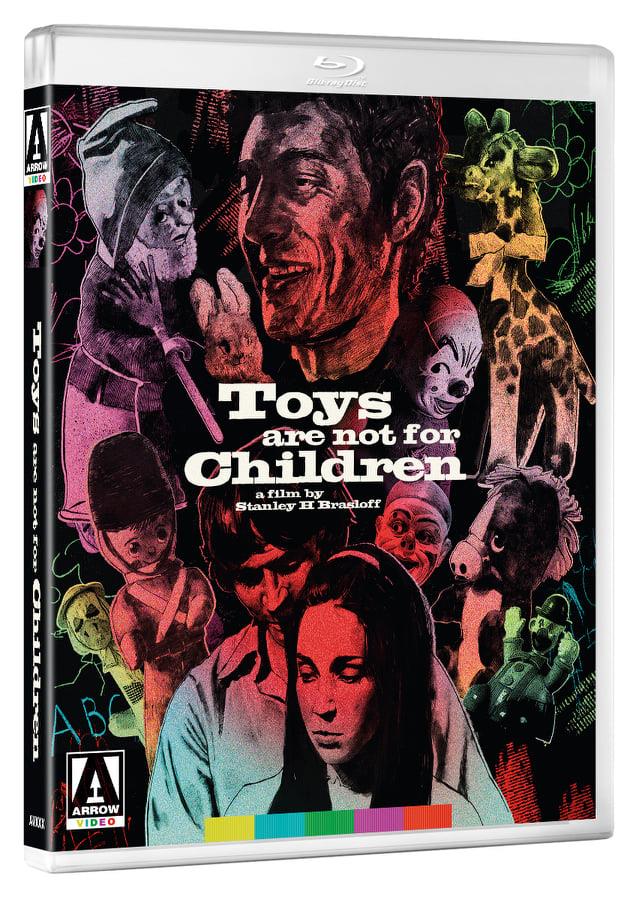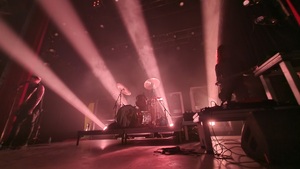
Toys are Not for Children
directed by Stanley H. Brasloff
starring Marcia Forbes, Harlan Cary Poe
Arrow Video
If there is one constant in American independent filmmaking in the early 1970s is that the people making the films were unafraid and not only willing, but eager to buck tradition and seek out a unique vision for their film, no matter how humble a piece of forgettable exploitation they were creating. Even the most ignoble films from this period seem to crackle with creativity and earnestness the is unencumbered by irony. So the pre-_Jaws_ era of the 1970s was the perfect time for Stanley Brasloff’s incest fable Toys are Not for Children to be unleashed on unprepared audiences. Marcia Forbes stars Electra complex riddled Jamie Godard who, between her absent father,who sends her dolls and toys her entire life not realizing she isn’t perpetually the six yer old girls she was when he left, to her emotionally abusive, bitter mother, Edna (Fran Warren (Abbott and Costello Meet Captain Kidd). Jamie is stuck as a woman-child who chooses to sleep with her toys instead of her husband on her wedding night. A chance meeting between Jamie and an aging prostitute, Pearl, Evelyn Kingsley, at the toy store where Jamie works leads Jamie into a journey of self discovery, agency, and ultimately tragedy. The story jumps back and forth between the current story with flashbacks that are a tangle of memory, dreams, and Jamie’s madness. Frustrated with Jamie’s inability to consummate their marriage, her husband Charlie (Harley Cary Poe, The Dogs of War) begins to sleep with other women, making him a man just like her father. Jamie even finds herself parroting her mother’s barbs about her father to her husband. Jamie’s fascination with Pearl first gives her an adult role model, and Pearl a surrogate child, which leads Jamie to want to follow Pearl into the sex work trade with the bizzaro notion that she could reunite with her father is she became one of her father’s whores (as per her mother). Pearl is against the idea, but her sleaze ball pimp Eddie (Luis Arroyo), who may have been an influence on Quentin Tarantino for his character of Vincent Vega in Pulp Fiction, is willing to help out. It is an important distinction that Jamie is not lured, tricked, or forced into the life. Jamie carves out a successful niche as a childlike prostitute specializing in elaborate fantasy role play with older men. It is here that she discovers her own sexuality and agency before the fateful, tragic reunion with her estranged father.
Toys are Not for Children exists in its own world that covers very familiar exploitation tropes, but subverts them in endlessly fascinating ways. The uncompromised vision of the writer and director combined with a fearless cast brings to life a tale of sexual perversion and empowerment that is always in danger of falling into the cliche. Marcia Forbes is perfectly cast with her huge eyes that make her look like a Margaret Keene painting come to life, which is a tad disquieting during her sex scenes. It is in these sex scenes in the last act of the film that Forbes is able to show Jamie as a happy confident young woman, regardless of how discordant her path. When dealing with child like women, incest, rape, and prostitution going camp, moralizing, or a lazy pornographic approach seem to be the most likely approached but somehow Brasloff manages to avoid these traps a create a captivating if unconventional film.
The film is presented in a 2K restoration from original film elements with a clear mono soundtrack. The disc is packed with a surprising number of great extras with two video essays, an audio commentary, the movie’s theme song “Lonely Am I”, newly transferred from the original 45.
On Fragments of Stanley Brasloff film historian and author Stephen Thrower (Eyeball) provides a thorough on camera biography on director/writer Stanley H. Brasloff and a breakdown on the production of Toys are Not for Children. Brasloff was a stand up comedian in the 1950s under the unlikely stage name Stan Howard before eventually finding his way into film. Trower touches on Brasloff’s first film Two Girls for a Madman (1968) before getting into the production history on Toys are not for Children. The piece ends on an intriguing not about a lost experimental film called Fragments of a Film by Stanley Brasloff where Toys are Not for Children was re-edited randomly into a non-narrative film.
In her video essay “Dirty’ Dolls: Femininity, Perversion and Play, author Alexandra Heller-Nicholas (Masks in Horror Cinema: Eyes Without Faces) starts with some uncanny similarities between the meeting of the main characters in Toys are Not for Children and Todd Haynes’ 2106 film Carol, especially the power dynamics between the female leads who both meet in a toy shop. Heller NIcholas uses this as a springboard to examine the links between “femininity, toys, dolls and play, and so called deviant sexual behavior”. The biggest takeaway from the piece is about the infantilization of women’s sexuality in culture. Baribe dolls are naturally covered with the straddling notion that over the years Barbie has gone from a toy marketed to 6-10 year old girls had become a toy aimed squarely at the pre-school set. Less obvious explorations of her theme lead Heller-Nicholas into less obvious explorations from fine art and pop culture including the 18th century William Hogarth painting Portrait of Young Girl Carrying Bird and Doll, Vladimir Nabakov’s Lolita, Elia Kazan’s film Baby Doll and even Shirley Temple’s Baby Burlesks short film series. Alexandra Heller-Nicholas expertly covers a lot of ground in under a half hour making great use of illustrative film clips and is not only a terrific extra for this disc, but could be expanded into a longer documentary.
Film writers Kat Ellinger (All The Colours Of Sergio Martino) and Heather Drain (mondoheather.com, Diabolique Magazine) lead a joyous celebration of Toys are Not for Children on their sparkling audio commentary. Once they get the obligatory biographical notes dispensed with, they take great joy in stripping down the characters, plot, and theme of the film. The unlikely sexual liberation and awakening of Jamie as a kinky call girl who is getting paid to work out her own sexual issues is thoroughly discussed. Kat and Heather express frustration with the difficulty in finding information on actresses from exploitation films as many of them made few films, often under pseudonyms and the entire nature of maverick independent productions don’t exactly lend to meticulous record keeping. The duo express sadness about the unfulfilled careers of too many artists whose work they admire. This track is does what the best audio commentaries do and gives the viewer a better appreciation of the film through discussion without telling the audience what to think, but rather things to think about.












